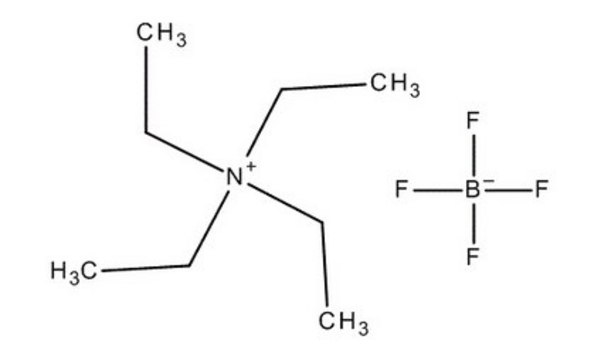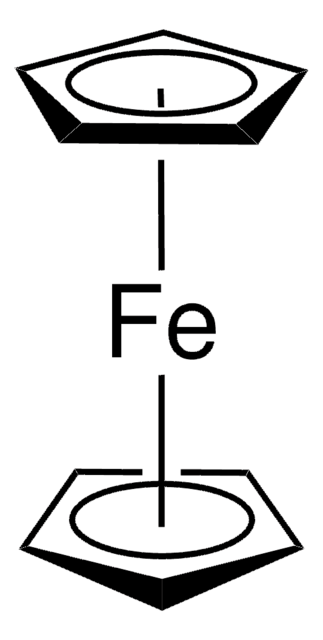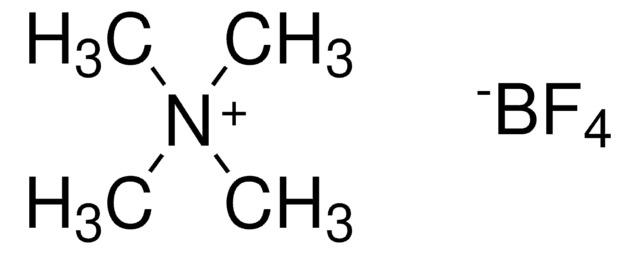242144
Tetraethylammonium tetrafluoroborate
99%
Synonym(s):
Tetraethylazanium tetrafluoroborate
About This Item
Recommended Products
Quality Level
Assay
99%
form
solid
mp
≥300 °C (lit.)
solubility
acetonitrile: slightly soluble(lit.)
SMILES string
F[B-](F)(F)F.CC[N+](CC)(CC)CC
InChI
1S/C8H20N.BF4/c1-5-9(6-2,7-3)8-4;2-1(3,4)5/h5-8H2,1-4H3;/q+1;-1
InChI key
XJRAKUDXACGCHA-UHFFFAOYSA-N
Looking for similar products? Visit Product Comparison Guide
Application
- In the electrocatalytic reduction of 6-bromo-1-hexene by nickel(I) salen.
- To synthesize conjugated oligomers via electrochemical polymerization.
- To fabricate high-performance supercapacitors.
Signal Word
Warning
Hazard Statements
Precautionary Statements
Hazard Classifications
Acute Tox. 4 Dermal - Acute Tox. 4 Inhalation - Acute Tox. 4 Oral - Eye Irrit. 2 - Skin Irrit. 2 - STOT SE 3
Target Organs
Respiratory system
Storage Class Code
11 - Combustible Solids
WGK
WGK 3
Flash Point(F)
Not applicable
Flash Point(C)
Not applicable
Personal Protective Equipment
Choose from one of the most recent versions:
Already Own This Product?
Find documentation for the products that you have recently purchased in the Document Library.
Our team of scientists has experience in all areas of research including Life Science, Material Science, Chemical Synthesis, Chromatography, Analytical and many others.
Contact Technical Service







